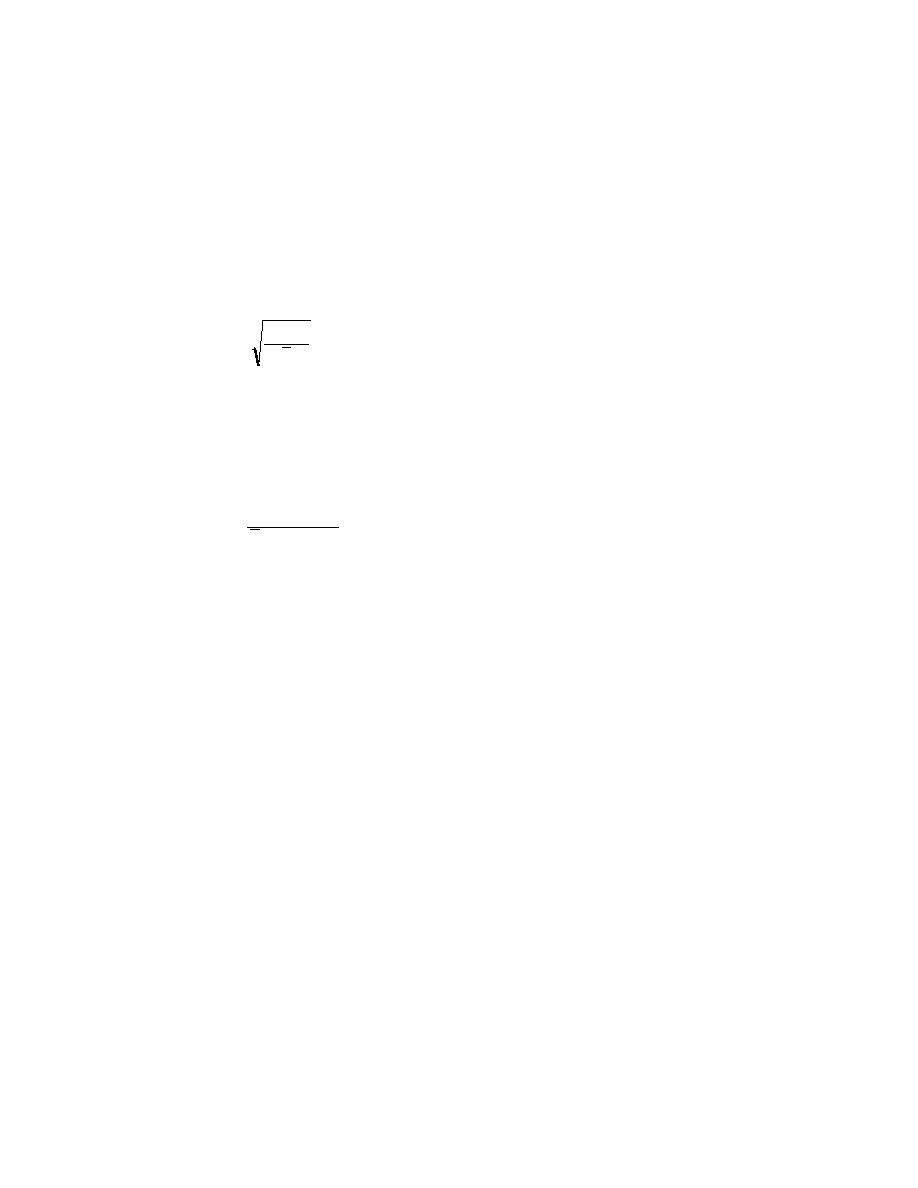 |
||
|
|
||
|
Page Title:
E.4.4 Example mixing-zone calculation |
||
| |||||||||||||||
|
|
 L = predicted mixing zone length, m
u
= cross-sectional average velocity (instantaneous or averaged over a few
minutes), m/sec-1
Tc = time taken for the observed value of to change by 10 percent, in
u
seconds
restricted by opposite bank of the receiving water body as long as:
8 Et L
W≥
(E-8)
u
where W is surface width of receiving water channel, m.
c. Step 6 - Estimate maximum width of mixing zone. The maximum width
of the mixing zone (measured perpendicular to the bank as shown in
Figure E-1 can be estimated as:
0.4840 Qe C e
Y=
(E-9)
u( C s - C b )d
where Y is maximum width of the mixing zone, m.
E.4.4 Example mixing-zone calculation
Following is a hypothetical mixing-zone calculation designed to illustrate the
use of the mixing-zone estimation equations. A proposed dredged material
containment area is expected to discharge into a river 480 ft (146.3 m) wide.
From a study of U.S. Geological Survey stream gage records, it is anticipated
that while effluent will be discharged, the lowest river flow will be about
7,600 ft3/sec (212.8 m3/sec) and that the river has a cross-sectional area of
4,000 ft2 (371.6 m2) at this flow rate. The local bed slope of the river is very
variable because of sediment transport. The containment area is expected to
have a peak discharge of 15 cfs. The only effluent contaminant that exceeds
WQS will be cadmium, which is expected to have an effluent concentration of
3.5 ug/L. The background concentration of cadmium in the river is below the
detection limit of 0.1 ug/L, and the applicable cadmium WQS is 0.25 ug/L. It
has been specified that the maximum acceptable mixing-zone size is a 750-ft
(228.6-m) radius centered on the effluent outfall.
demonstrate the use of the mixing-zone calculations, it has been defined so that
all the assumptions on which the calculations depend are valid. Decisions on
whether the assumptions are valid depend largely on the professional judgement
of personnel familiar with the disposal site.
E11
Appendix E Evaluation of Mixing in Surface Waters
|
|
Privacy Statement - Press Release - Copyright Information. - Contact Us - Support Integrated Publishing |